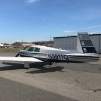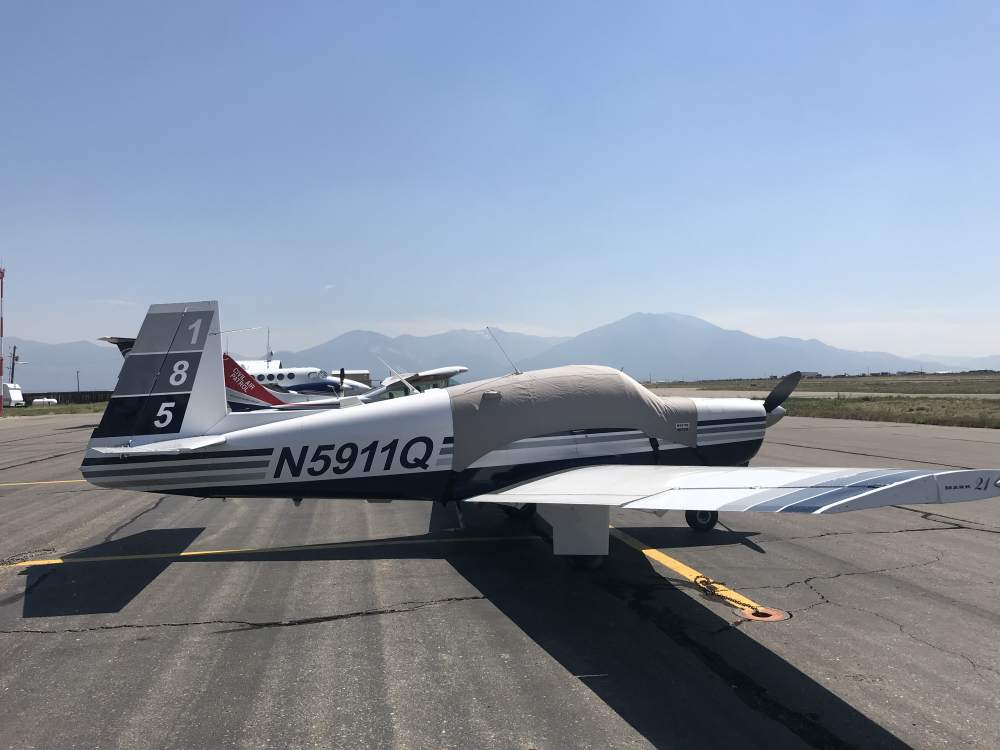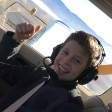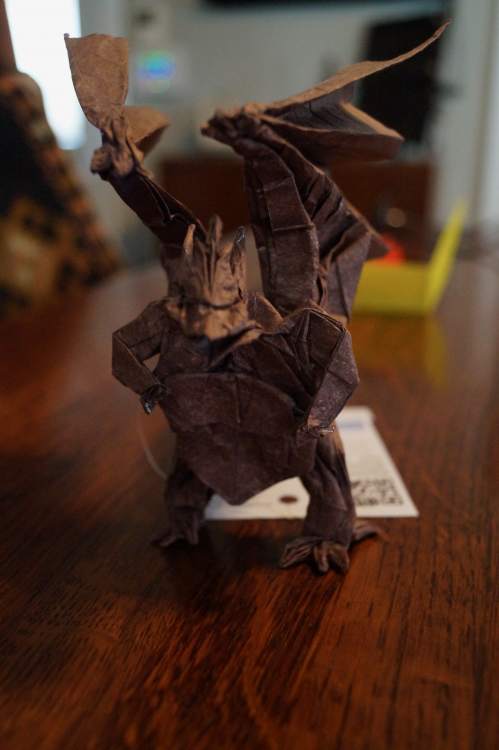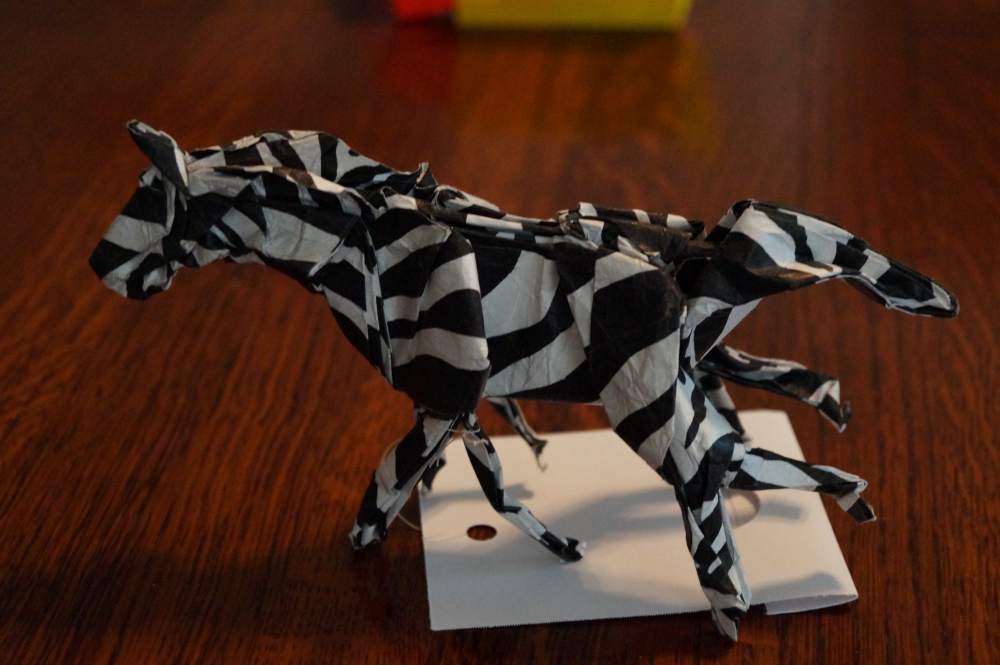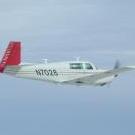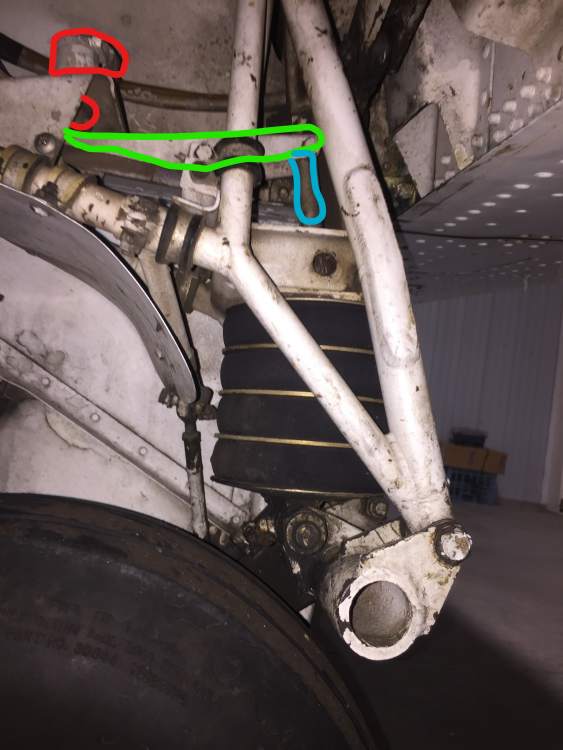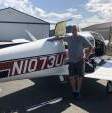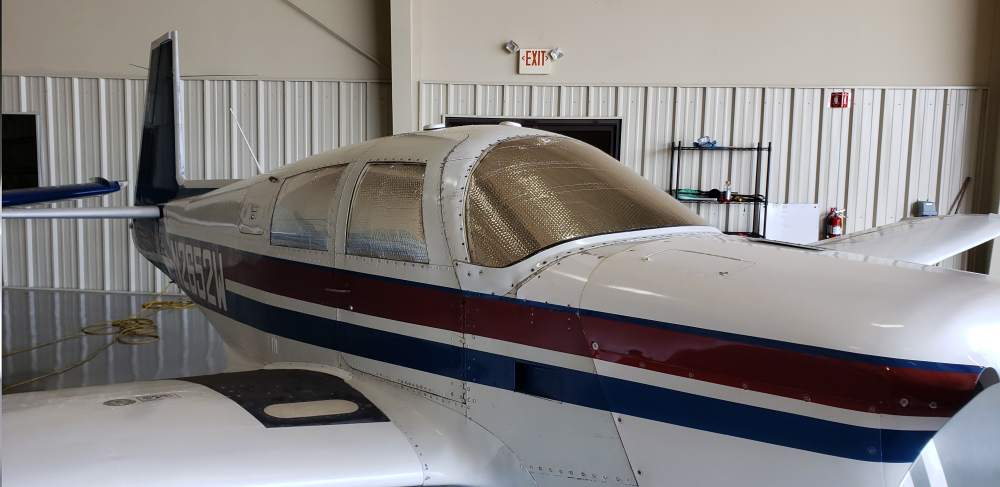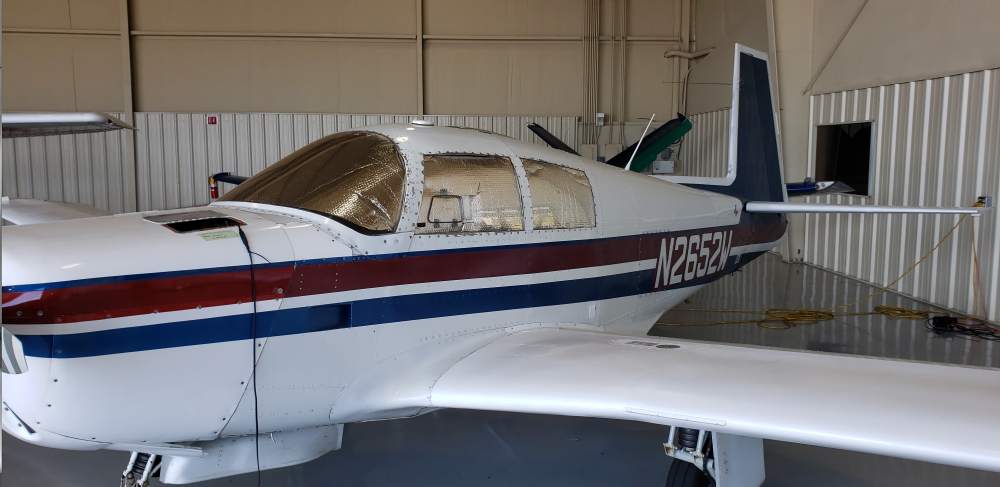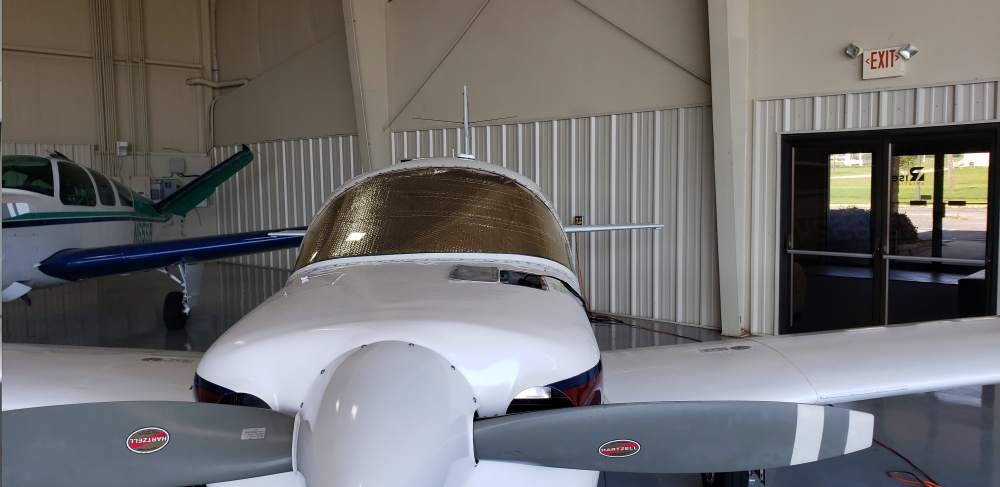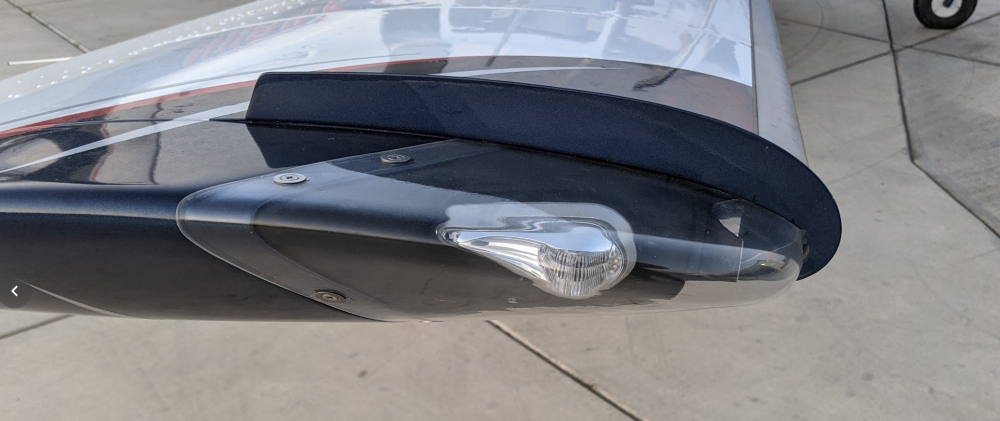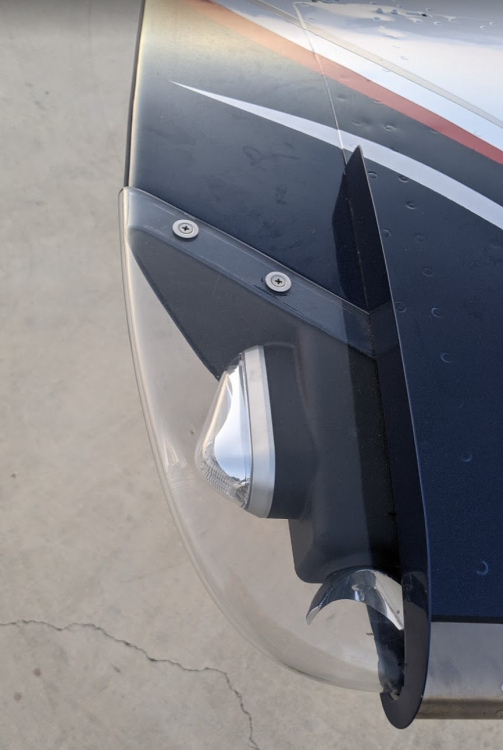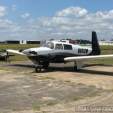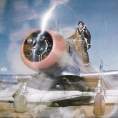Leaderboard
Popular Content
Showing content with the highest reputation on 06/18/2021 in all areas
-
Flew my trusty C model across the USA and back in 14 days. Here’s a few numbers .. 8,700 - highest DA takeoff (Taos, NM) 5,137 - miles flown 328 - gallons of 100LL 40 - hours flown 17 - cats carried from a shelter in Illinois to a rescue in Colorado 1 - quart of oil added 0 - hours spent on autopilot (I don’t have one!) I was very fortunate. The weather cooperated and I flew VFR almost the entire trip. The plane ran like a Swiss watch. Except for a couple of hours around ABQ the air was mostly smooth. Without exception the folks in the FBOs were friendly and helpful. I can’t wait to do it again, next time I’m taking the northern route.8 points
-
There is basically zero actuarial data in aviation insurance other than what's available through Nall or the FAA. There are no aviation actuaries at aviation insurance companies. It's literally a bunch of pilots trying to run an insurance underwriting company. If all flights profiles are the same, 4 equally skilled pilots flying 50 hours each is just as risky, if not more, than 1 pilot flying 200 hours. Also, the risk of a partner-to-partner claim exists when there are severability clauses. In some cases, one partner can sue another partner in a covered loss, as opposed to a sole owner who can't sue himself and collect under the policy.4 points
-
I've had a couple. My current AC has the heads up display mounted above glare shield and I find it very useful. My previous AC had the indicator on the panel and I flew AS and occasionally crosschecked the AOA. Now, with the indicator in my field of view it's the opposite. Pitch to the blue circle, crosscheck AS, and eyes back outside. For me, moving the indicator above the glare shield removed the system from the "gimmick" category and placed it firmly into the "tool" space.3 points
-
Hi Members The high shipping cost is driven by the volumetric weight of the discs. The discs weigh but 2.33kg for a stack of 11 but the volumetric weight is 5kg. DHL also slaps on a heavy surcharge during covid times. We are in a Lockdown Level 3 situation in South Africa and strict sanitising protocols apply which also drive costs up. If there are any members with contacts at USPS we might be able to ship to a central drop-off point and distribute internally with USPS. The next batch are being manufactured and delivery will start by 21st June Covid willing. My experience with dealing with USPS was to say the least, like getting my teeth pulled. That being said, I still can keep the cost of these disks at approximately 50% below what is available elsewhere. Members must please look on the AVUnlimited website for the pdf link to download the detailed drawing and instruction sheet. This sheet must be completed, signed and emailed to me. This will answer the FAA Owner Produced Part Regulation, FAR 21.303(b)(2). The original form must then be handed to your AMO as source document. The AMO must then note the replacement parts as Owner Produced in the airframe logbook and attached the form. Members can order their discs in advance as I manufacture in relatively small batches(400 disks) at a time. The stock runs out fast. If any members have questions or queries, please email me at gert@avunlimited.co3 points
-
Below are photos of the mechanism in the left main. In the annotated photo, the electrical switch is outlined in red. It is a spring-open, push close switch. The spring is quite firm. The switch is actuated by the rocker arm outlined in green. When the disks are compressed on the ground, the forward arm of the rocker is pushed up by the rod outlined in blue, and the aft arm pushed down, such that the aft rocker arm loses contact with the switch. The spring-loaded switch opens, which breaks the circuit that allows the gear to retract. At takeoff, the pucks expand, which moves the rod down, in turn moving the forward arm of the rocker down. This is supposed to push the aft arm of the rocker up to push against the spring-loaded switch, thereby closing it and allowing the gear to retract. As I said, the spring in the switch is quite firm. The weight of the wheels pulling the rod down is insufficient to close it. The mechanism only works if the expansion of the pucks pushes hard enough against the swing arm to draw the rod down with enough force - through the rocker - to push the switch closed.2 points
-
2 points
-
Wouldn't you know it. I just joined this forum a few minutes ago and this is the first post I read cause I live in FL and it caught my eye. I wanted to test drive a Mooney since I've never flown one before. I like the idea of mechanical gear linkage and heard good stuff about Mooney performance. So I called Ocala Aviation and flew their M20C yesterday morning. It was a blast. It definitely looks like a training bird but it's what's under the hood that matters anyway if you want to get a feel for performance and flying characteristics. Next up for me is the Echo with 200hp - that's a plus with our high DA summer days here. Bottom line is I recommend giving them a call.2 points
-
With the record discrepancies and various equipment removals and additions, I think it is really time for a re-weigh. If you've arrived at a starting point where you can't be sure of the numbers, there's little point in wildly adding and subtracting from it in the hope you will end up with a more accurate figure. Alternatively just go and fly it with a couple of heavies in the back seats and stall it - if you end up in a smoking hole then the CofG was probably too far aft. Go again with a couple of heavies in the front seats, then if you smash the nose gear off on landing then it was too far forward2 points
-
appreciate that. i got it working this morning. used my ram air bulb, since i no longer have ram air. so for now i am good. the bulb ( for future reference) is a two prong AML7327. thanks to everyone who replied. fix was easy1 point
-
Similar discussions going on at Beechtalk. According to the poster over there, Garmin knows about this and the way to avoid it is to download IFR, then exit and re-enter FlyGarmin and download terrain. “Don’t tick both IFR and Terrain updates in the same batch”. I have been avoiding updating my terrain card since I read this thread, hoping to hear more info. I think I am brave enough to try the terrain card separately now. Update to follow....1 point
-
But but but, I bought that Sporty’s electronic E6B because Hal said it would make life easier in the cockpit! [emoji1787] Sent from my iPhone using Tapatalk Pro1 point
-
Now we have FEVA 2.1 that considers much much more than just the oscillating EGT signifying a valve not properly rotating. Unfortunately not all burnt valve as began with the rotating issues hence FEVA 2.1 which is a totally different approach based on a machine learning model that provides a measure of statistical risk. https://www.savvyaviation.com/savvyanalysis/feva/ On LOP, sorry but not every engine has the mixture distribution and or strong enough ignition system to support LOP ops. Nothing wrong with leaning to roughness and then slightly enrichening. You may think your LOP but without a monitor many would learn they're solidly at peak. So best to limit this practice at % power setting less than 65% so there is zero concern for where you set the the mixture. But above that it's wise to set the mixture either rich enough or lean off from peak. nothing complicated about it with a modern engine monitor and a pilot that knows how to use it. Sent from my iPhone using Tapatalk1 point
-
This one has gear doors which means it has been converted to constant speed prop and retract as @bluehighwayflyer mentioned above which makes it essentially a C. You can also see the Johnson Bar and down lock block in a couple of the interior pictures. When I was looking for a plane I skipped over a D a few times until I realized it wasn't a fixed gear/prop at which point I gave it a closer look and bought it. The difference between mine and this one is that mine was flying regularly and had some updates that had been done along the way. Also as Jim mentioned there are only three D's that are their original configuration, this isn't one of them. This one is going to be a project involving lots of time and money.1 point
-
Some have reported not having this problem. I suspect they left the wingtip white tail lights installed (I don’t think Whelen has an LED replacement for those) which preserves a current path through the filaments for the annunciator. Skip1 point
-
When you take them off, place a stack of old ones beside a stack of new ones. Cold weather is when old donuts show up as a problem, the gear won't raise after takeoff.1 point
-
Where they wearing an eye patch with their mask when they handed you the estimate? Terry H and I installed mine. In my case, the real work was running new wires to operate the senders in frequency mode. Being a slow and meticulous owner, it took me about 5 hours. There is another 3 hours removing and reinstalling the interior to get to the inboard senders. And then another 3 hours to make the connections and do the calibration. Even doubling that to 22 hours and using a $100/hr shop rate, I’m not sure how they came up with $6,000. I’ve been flying behind these CiES senders for the past 3.5 years. I actually look at my fuel gauges now. 90% of the fill ups are within 0.5 gallon what the gauges are reading. And when they are off, it is no more than a gallon and it is usually because of the expansion/cooling thing that goes on with fuel. There is a rounding thing going on with the JPI 900 displayed quantity. Bob Belville clued me in to look at the raw data from a JPI download. You can see it to a decimal place. I have seen and heard comments about problems with their fit. In my case, I needed to install them upside down to make them clear everything. I did speak to Scott a lot through the process and at times it was frustrating because the FAA approved documentation left out details. He explained the challenges of modifying the documentation for every application. I get it. I can attest they work great in an F model with bladders. Sent from my iPhone using Tapatalk Pro1 point
-
1 point
-
Most M20Ds coming up for sale that have been converted to retractable and constant speed will be noted D/C… If I’m looking for an M20C… I’m probably not looking at things marked M20D… An M20D came up recently the third of three around here… It takes a lot of reading and studying to find the right plane… then the real work begins…. PPI… Most first time buyers aren’t looking for projects… being out of annual for years qualifies as a project… Best regards, -a-1 point
-
To set a base line… I bought an M20C in Y2K that was completely mediocre… minimum IFR capable… For 34amu…. Very run-out a decade later it sold for 18amu… So… today, a very run-out M20C can start in the mid 20s… sure… But, that is a project for somebody with an A&P…. +1 for not a good deal for a new pilot… Looks like Dev has a doge…. PP thoughts only, not a mechanic… Best regards, -a-1 point
-
My C does OK after sorting out my Carburetor issues. This was last week at 15.5K, 24/2400 around 11.5 gph. I could have probably leaned more, but am being a bit conservative after exhaust valve on cylinder 3 was leaking after 300 hours (New Lycoming Cylinder). I was having a problem with it running lean at altitude when using turbo. Carburetor overhaul fixed problem.1 point
-
IMHO there is no way to know the value of a vintage Mooney without getting some detailed history on it and doing a thorough pre-purchase inspection by an experienced Mooney A&P. Any value agreed upon is simply a necessary first step for an escrow to begin- the chance to take a closer look to see if the imagined value is even close to the real value (and with pre-J aircraft, it often is NOT). Have the IA’s who have been signing off annuals have been doing their duty? I’ll say your chances are less than 50/50 that the plane has had a proper annual done in the last 5 years… and you’ll never know until you peel everything back and take a look. All offers on these old planes made should be made with sanity; that is, contingent upon confirmation of stated condition and airworthiness. Perhaps a better way would be to take an A&P with you prior to even making an offer…. The number of people buying these planes without having a qualified person take a close look is astounding. Some do not even go see the plane themselves, prior to buying it! Insanity. Buyer beware!1 point
-
I will probably get roasted by all of the Mooneyspacers that have AOA systems and love them, but here is my 2 cents anyway. I have flown several aircraft with really good AOA displays, from fighters to transport category aircraft. If you are operating close to the stall side of the performance envelope, it is a really good tool for helping you to know just how close you are to that edge regardless of your weight or the weather conditions. For a fighter, AOA is really important because it can lift almost its own weight in fuel and ordnance. That makes for a big range of potential approach speeds. My Mooney can only lift about one third of its empty weight, so the difference in stall speed between empty and gross weight is less than 10 kts. That being said, I generally fly in and out of reasonably long runways and I try to operate my Mooney well away from the edges of the envelope so I don’t feel the need for an AOA indicator. If I were routinely flying into short fields where every extra knot meant increased risk of running off the end of the runway, I might feel differently. So unlike some of the cool toys we can buy for our airplanes, AOA can be quite useful under certain circumstances. I just don’t fly in those circumstances enough to justify the cost.1 point
-
LIke others have said, the avionics need some investment. The 1034SMOH and «In for annual» need some more investigation; if the overhaul is 40 yrs old and/or the last annual is more than 3 yrs ago, it will need some money in the engine and maybe other components in the next few hours! Flightaware.com says it landed over 20yrs ago... https://flightaware.com/live/flight/N6659U1 point
-
In for fresh annual - I'd want to know how long it's been sitting. That fresh annual could mean 'get it ready for sale'. Also very old avionics too. Better to save up for a better equipped plane flown regularly. -Don1 point
-
Solder iron. I believe to do copper pipes. I think I have one from my grandfathers stuff1 point
-
1 point
-
1 point
-
You’re virtually guaranteed to be underwater on any airplane you purchase. It can still be overpriced, but being underwater should be expected.1 point
-
I have been generally quite impressed with how the garmin 430 has had a 20 year lifespan and while I would not go buy one today, I would be perfectly happy using one if it were still in my panel. I did upgrade my 430w to a gtn650 about 4 years ago when my 430w had a screen issue, and rather than repair it I traded it in. It still had good residual value. I might have been still using it today otherwise. So it is my hope with my new GI275, brand new tech today, and surely there will be something better in 5 years that I won't likely get just to have the latest and greatest. I could imagine that the GI275 could be still chugging along in 15 years even if it is no longer latest and greatest. But will avgas be available in 15 years?1 point
-
Reminds me of another Mooney ad from a slightly earlier era. Awwww yeaaahhh doughnuts baby1 point
-
I asked for a quote to add a third partner to our two person partnership. New guy is 305TT with 165HP/COMP. It raised our renewal rate (up 40% from previous year) from $1855 to $2091. So the per pilot expense went $927 a piece to $697. I thought for sure it would be way more expensive. Both current partners have over 1000 hours and type in one of us is an ATP.1 point
-
This is a different switch and only seen on the quadrant throttle system. Not the push pull style throttle.1 point
-
It's normally about 25-50% surcharge when you hit 4 equally experienced pilots.1 point
-
Will have owned my Bravo 29 years in August. On engine number 3. Have taken the APS Course and got a lot of value from it. While I believe in LOP and run some Continentals smoothly that way, in short tests my previous engines were not happy campers running that way. I have the GAMIs. First engine made it to 300 hours past TBO as a result of the change to the Bravo engine. The 2nd would have made it to TBO were it not for an incident during an Annual that made it financially practical to get a new Reman at 1600 hours. Turbos on the first 2 engines needed to be OH'd at mid time. In spite of running ROP l had expensive exhaust issues with both the 1st and 2nd engines. Run cross country 29/2400 (75% Power). From my perspective of 10,000 hours flying Mooneys and 5,500 hours flying Bravos, I'd stick with ROP. Keep a bucket of cash on hand if you rationalize for whatever reason and choose to run LOP.1 point
-
Owners are always going to try to convince you the direction they went is the best way. Lots of options these days but I do feel the larger display panels modernize the panel/plane and will continue to do so in the future.1 point
-
1 point
-
When I made my upgrade decision, I started with the autopilot. In three years, I repaired my intermittent KAP 150 computer twice and replaced it with a used unit when it failed the third time. So, I wanted a GFC 500 for reliability. The G3X is “newer” in the sense that in incorporates GFC 500 autopilot logic and integrates directly with the G5 standby. This means that you always have the autopilot if either the G5 or G3X fail. I believe that the TXi has more 3rd party interfaces and is going to the better choice if you want to integrate with non-Garmin equipment especially autopilots. If you use it with a GFC 500, you’ll need a G5 or GI 275 to drive the autopilot and you won’t have the redundancy if that device fails. Skip1 point
-
I’m getting a PMA450B. The killer feature that sold me is the ability to keep the copilot on the intercom with the pilot while turning off the radio audio to the copilot. Wife loves that idea. Skip1 point
-
The DLC will go a long way toward solving the corrosion problem, but it’s not a panacea. The time in service thus far has proved quite encouraging.1 point
-
I keep hearing about the DLC 'cam followers' taking care of the sprawling issue but, I still see some original followers in great shape - yet the cam is shot. How will DLC followers solve what might be a metallurgy issue with the cam? I guess time in service will tell... Just playing devil's advocate.... -Don1 point
-
Yeah, I grew up in my Dads car shop and have seen some things myself. In this case, however, this is exactly what my Lycoming cam and lifters looked like after a long storage period, and it was a result of corrosion. The line of corrosion across the lobe was almost certainly a result of it setting still for some extended period of time, and almost certainly it set against the lifter who’s face is seen in the picture. I can not see the adjacent lifter, but I would be willing to wager that it is worn but not spalled. The corrosion causes a pit that starts tearing out one small piece at a time much like a pot hole. Those small pieces look like a Christmas Tree ornament when seen in the cut open filter. The currently produced Lycoming DLC coated lifters are said to virtually eliminate this problem. I believe it.1 point
-
1 point
-
You don’t need a calculator doing it my way. Do it in your head very easily. 100/2 is 50 and move the decimal place here it obviously belongs.1 point
-
That's kind of the reason I've never looked into landing at grass strips--you CAN'T SEE any potholes, so how would you know there aren't any?1 point
-
Are you sure there is supposed to be caulk there? The windows should be glued onto the skin from the inside and secured with screws (some older models) or retainers (newer models). The adhesive is supposed to ooze out when the window is installed and be wiped off. Sometimes when owners get a leak, they try to fix it with a caulk bead on the outside. Window leaks are a prime source of corrosion damage to the tubular structure. If SB 208B hasn’t been done recently, it might be a good idea. Mooney specifies PR1403-G-B2 sealant in SB 208B. Skip1 point
-
Soldering Iron. My father used to have one for working on sheet metal. You would stick it on the coals and heat it up red hot, use it until it cools. Also is persuasive at making people tied to a chair talk https://stevenjohnson.com/soldering/flameirons.htm1 point
-
Almost all operations on the GTN series of GPS can be done with touch or buttons. However, even in turbulence, with the ledges provided, I've never had an issue of not being able to do what I wanted to do. Surprisingly, one of the best features of the GTN is the VFR approaches provided to almost every airport and every runway, front and back, with the option of coupling both laterally and vertically to an autopilot, Garmin or 3rd party. So far, at least once a year Garmin updates their units with new features. Whether you love them or hate them, they provide really good products.1 point
-
There was a new terrain database issued a few months ago that has caused problems with improperly loading on multiple systems/navigators. Garmin has issued some bulletins on how to fix this issue and get it properly installed. I would search the garmin "Aviation Alerts" page using GNS as a key word. I suspect you'll find some help. If not, then call Garmin tech support and they'll get you through it. https://www.garmin.com/en-US/aviationalerts/1 point
-
The Mite section of MS has been on the look out... I thought they were from a Mack Truck for some reason... Best regards, -a-1 point

